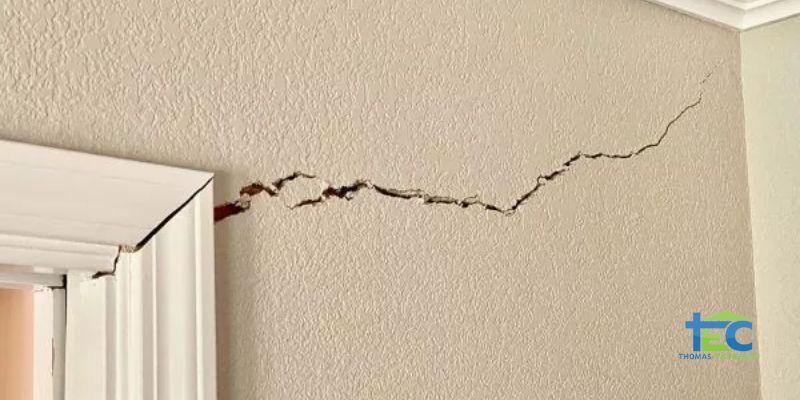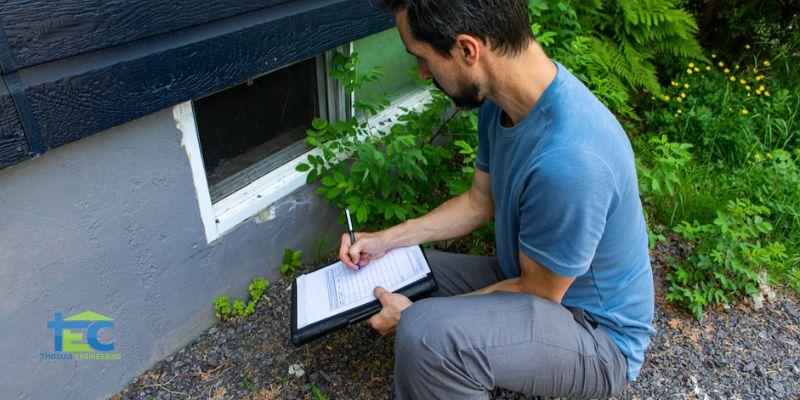
The causes of foundation movement are varied and present themselves differently. The most common factors are soil conditions, location, materials used, and the weight of your home. All of these have an impact on your foundation.
The most obvious indicators that your foundation is moving are:
- Diagonal cracks on interior walls at the corners of doors and windows. Cracks can also occur at intersections of ceilings and walls or wall surfaces.
- Door binds and windows that do not open or close properly, as if somehow the frame has become too small or “bloated.” You’ll notice some curves on the frames. This goes for cabinet doors too.
- Floors are not level. They’re uneven or sloping.
- Exterior brick cracks
- Concrete perimeter beam cracks
- Displaced cracked moldings
- Separation of wood trim above brick
- Separation of bricks and adjacent wood surfaces on the sides of your chimneys and garage doors
- Clearly noticeable new spaces between walls, and spaces on ceilings or floors
- Walls separating from your house frame
Causes of Foundation Movement
Our homes’ foundations are designed to transfer contents and weight to the underlying soil or rock. In the Southern states, most foundations are slab-on-grade (slab foundation), however, the pier and beam foundations are still commonly found and used even today. You can see this type especially in older homes.
The shrinking and swelling of expansive soil, just under your home’s foundation, is the primary cause of movement. This expansive soil swells when moisture levels increase. Conversely, they shrink when moisture levels decrease, causing some foundation movement. Foundation movement consolidates improperly compacted soil or rock fill, where portions of the foundation are forced to settle.
Since our homes transfer weight, the foundation moves when soil moves. Foundations move uniformly, they do not deflect or become un-leveled. Some parts of the foundation may move more than others when going through a process called differential movement. In differential movement, foundations are damaged. The same goes for cosmetic finishes all over our houses.
Differential Movement Limiting
Soil moisture variations can cause swelling and shrinking on soils that support your foundation. Therefore, minimizing those moisture variations would also minimize foundation movement.
Here are the three most common things that you can do to limit differential movement:
1. Water
Always water your lawn during dry periods. Water the area adjacent to your foundation as well.
2. Drainage
The soil of the foundation perimeter should be higher than its surrounding soil. That way, water will drain away from your foundations.
3. Trees and Shrubs
Plant large trees or shrubs close to your house’s foundation. Doing this would result in the drying of the soil under your house. Should existing trees or shrubs cause the stability of your foundation to be affected, a barrier trench can be inserted between trees and foundations.






